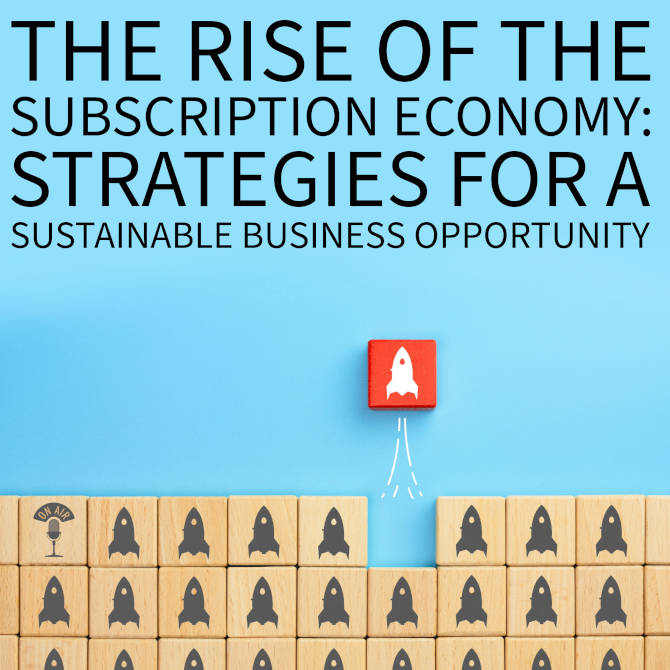And here we go another podcast for another day. What are we going to be tackling today? Well, I think we should be talking about upselling and cross-selling and the art around it. It’s one of those things that can be a bit of a minefield, but when done right, it can really help you boost your revenue.
So should we dive in?
Basic Concepts
Let’s go down to the basics.
Upselling is when you suggest that a customer buy more expensive or higher-end versions of a product they already consider.
Cross-selling, on the other hand, is when you suggest related or complementary products.
Both can be really effective ways to increase your revenue, but it’s important to do it right.
What to consider?
Now, there’s one thing to keep in mind is that both these techniques should be used to help the customer. You’re not just trying to make a quick buck here. You’re trying to offer something that will truly benefit them.
Uh, this is the key to avoiding the risk of alienating the customer.
Nobody likes to be alienated. It’s funny because you can be doing these recordings and I was thinking of the do’s and don’ts, what should I actually say? And my brain has just gone totally dead.
Okay, so, the first and most important thing is to make sure that your suggestion is actually relevant to the customer’s needs. Don’t just suggest something for the sake of suggesting it.
For example, if someone is shopping for a new laptop and you suggest they add a set of kitchen knives to their cart, it’s going to come across completely out of left field and potentially make the customer feel… That you don’t understand them.
Another thing you should avoid is being too pushy or aggressive with your suggestions. You don’t want to make the customer feel like they’re trying to be forced into buying something that they really don’t need and never make a customer feel like they’re being taken advantage of. If someone feels like you’re trying to rip them off, they’re not going to want to do business with you.
So always make sure your suggestions are fair and reasonable. You know, I see some places where they’ll put a package together and it’s cheaper to buy the individual items. Well, this has already rattled me because if I can see the individual items are actually cheaper than the package itself, then I’m going to think you’re trying to rip me off.
I did have a client who thought this was a great idea to actually do. And I tried every… What I’m actually saying is that we’ve got to make sure the suggestions are done in a natural and non-pushy way. Don’t make it seem like you’re trying to sell them something they don’t need.
And lastly, always give the customer the option to say no, this is a key to maintaining a positive relationship and avoiding alienating the customer.
Useful Techniques
Now let’s talk about some techniques for effectively upselling and cross-selling.
One great way to do this is to create a product bundle, as I mentioned earlier. Or packages. This way you’re suggesting complimentary products in a way that makes it seem like a deal, especially if there’s a package discount.
Another technique is to use data and customer insights to personalise the upselling and cross-selling process. It makes it feel less like a sales pitch and more a helpful suggestion. And lastly, use persuasive language and create urgency to encourage them to make a purchase. This can be done in a subtle way without being too pushy or aggressive.
Such as, on your site you could have a timer, a sales timer. It’s gonna run out in an hour, or the likes of that. Whereas a lot of air flights would actually utilise this, they would say, you know, 12 people have just purchased this seat. There are four tickets left when really there’s probably about 100 tickets left.
And that’s what you would call a more persuasive language to create urgency. You have to remember that many a times the customer will actually say no. It doesn’t mean they’ll never buy from you again. It’s just they’re not particularly interested in that. They’ve gotten there for one thing and they’ve got that one thing.
So the one way to handle objections is to address them head on.
If a customer says they don’t need a product, offer a counter argument that explains why it would benefit them. And if a customer says no, always remember to maintain a positive attitude. How do we actually deal as a business with rejection?
It’s to actually take it on as a learning opportunity, take note of what worked and what didn’t, and use that information to improve your approach in future business.
Final Notes
And that brings us to the end of our episode of The Art of Upselling and Cross-Selling. Remember, when done right, these techniques can be a really effective way to increase your revenue and help your customers get the most out of their purchase.
Some key takeaways to keep in mind are always make sure your suggestions are relevant and beneficial to the customer, to offer them in a natural and non pushy way, and to give the customer the option to say no. And if you do encounter objections or rejections, don’t take it personally. Instead, use it as an opportunity to learn and improve your approach.
We would love to hear your feedback on our episodes and any questions you have about e-commerce, branding and marketing. Please leave your comments on our channel and we’ll do our very best to address them in future podcasts. Thanks for tuning in and we’ll see you next time on the e-commerce insiders podcast.











